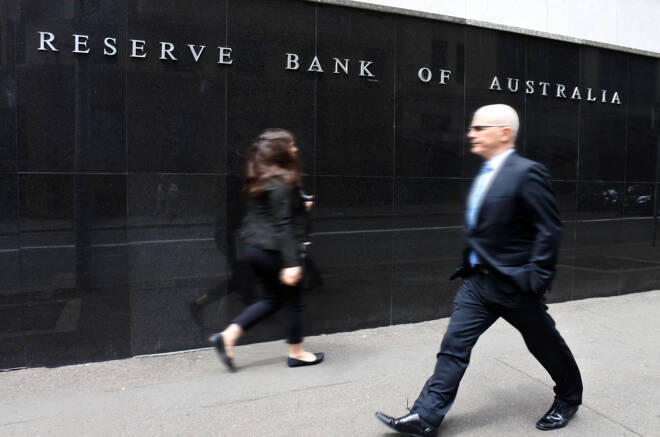Advertisement
Advertisement
The Aussie Dollar Gets an RBA Boost as Focus Shifts back to Geopolitics
By:
The RBA gives the Aussie Dollar a boost as it holds back from any rate cut talk. Chatter on trade and UK politics will garner the market attention today.
Earlier in the Day:
It was a relatively quiet day on the economic calendar through the Asian session this morning.
The Aussie Dollar and the Pound were in action in the early part of the day, with current account figures and retail sales numbers providing direction.
Later in the morning, the RBA also released its final monetary policy decision of the year…
On the geopolitical front, the markets reacted to Trump’s latest tariff threats from the U.S session.
Trump announced plans to roll out tariffs on Argentinian and Brazilian Aluminum and steel exports to the U.S.
Late in the day, the U.S President also threatened tariffs on all French exports to the U.S in retaliation to digital taxes. The latest threat came in response to the WTO’s decision that the EU has failed to remove all subsidies to Airbus.
For the Aussie Dollar
The current account surplus widened from A$5.9bn to A$7.6bn in the 3rd quarter. Economists had forecast a surplus of A$6.1bn.
The Aussie Dollar moved from $0.68198 to $0.68229 upon release of the figures that preceded the RBA interest rate decision and rate statement.
On the monetary policy front, the RBA held interest rates steady at 0.75%. Salient points from the rate statement included
- After a soft patch in the 2nd half of last year, the Australian economy appears to have reached a gentle turning point.
- The central scenario is for growth to pick up gradually to around 3% in 2021.
- Low-level interest rates, recent tax cuts, ongoing spending on infrastructure, an upswing in house prices and a brighter outlook for the resources sector should all support growth.
- For the domestic economy, the outlook for domestic consumption continues to deliver uncertainty.
- A sustained period of tepid wage growth continues to weigh on consumer spending.
- Other sources of uncertainty include the effects of the drought and the evolution of the housing construction cycle.
- The unemployment rate is expected to remain at around 5.25% before gradually declining to below 5% in 2021.
- Wage growth is expected to remain subdued for some time.
- The Board expects inflation to pick up gradually to be close to 2% in 2020 and 2021.
- A rise in asset prices and low mortgage rates should lead to increased household disposable incomes that should support household spending.
- Considering the effects of low-interest rates and the long and variable lags in the transmission of monetary policy, the Board decided to hold the cash rate steady.
- The Board is prepared to ease monetary policy further if needed to support economic growth, full employment and the inflation target over time.
The Aussie Dollar moved from $0.68193 to $0.68397 upon release of the rate statement. At the time of writing, the Aussie Dollar up by 0.21% to $0.6883, the upside coming as the RBA held back from any chatter of rate cuts this time around…
Elsewhere
At the time of writing, the Japanese Yen was down by 0.19% to ¥109.19 against the U.S Dollar, while the Kiwi Dollar was up by 0.09% to $0.6509.
The Day Ahead:
For the EUR
It’s a quiet day ahead on the economic calendar. Key include Spanish unemployment change figures in the early part of the session.
Barring particularly dire numbers, the EUR will likely brush aside the numbers.
A lack of stats will leave the market focus on geopolitics, with the UK elections and chatter on trade the key drivers on the day.
At the time of writing, the EUR was down by 4% to $1.1075.
For the Pound
It’s a relatively busy day on the data front. November BRC Retail Sales Monitor provided direction in the early part of the day.
Early this morning, the BRC Retail Sales Monitor slid by 4.9%, year-on-year, reversing a 0.1% rise in October.
According to the BRC report,
- While the headline figure was grim reading, if adjusted for the timing of Black Friday and Cyber Monday, sales were estimated to have increased by a more reasonable 0.4%.
Later this morning, finalized construction PMI figures are also due out.
Barring a material shift from prelim, however, we would expect the PMI to have a muted impact on the Pound.
UK election chatter will continue to drive the Pound. Any widening the Tory lead would support the Pound.
At the time of writing, the Pound was down by 0.02% to $1.2937.
Across the Pond
It’s a quiet day on the economic calendar, with no material stats due out of the U.S.
A lack of stats leaves the Greenback in the hands of risk appetite in the day and any chatter on trade.
At the time of writing, the Dollar Spot Index was up 0.06% at 97.914.
For the Loonie
It’s another quiet day on the economic calendar, with no material stats due out of Canada to provide direction.
The Bank of Canada is in action tomorrow. Even better than expected Manufacturing PMI numbers from China and the EU failed to provide support on Monday. Weak GDP numbers from last week raised doubts over whether the BoC will stand pat on policy near-term. This is in spite of Gov. Poloz’s recent comments.
The Loonie was up by 0.04% to C$1.3303, against the U.S Dollar, at the time of writing.
About the Author
Bob Masonauthor
With over 28 years of experience in the financial industry, Bob has worked with various global rating agencies and multinational banks. Currently he is covering currencies, commodities, alternative asset classes and global equities, focusing mostly on European and Asian markets.
Advertisement
